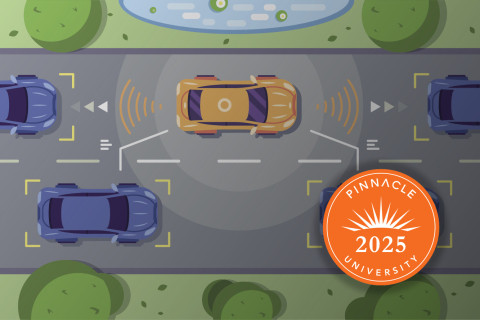
Interview with Roosevelt Mosley: Pinnacle Scores Again
Interview in Best's Review - August 2023
Roosevelt Mosley, Principal and Consulting Actuary with Pinnacle Actuarial Resources, said that from summary data, the company has the flexibility to add and use different characteristics of the road-level data to develop scores. “After ensuring that we are comfortable with the data elements, we use more complex modeling approaches to ensure that the key interrelationships between the road segment data items are captured,” he said. Following are excerpts from an interview.
How does road-level data improve the accuracy of auto pricing?
Insurers have worked diligently over the years to ensure that data points—such as a driver’s or an automobile’s age—are efficient, accurate and as predictive of risk as possible. Geographical location, naturally, has long been a key data point used to understand the risk of an auto policy. That makes perfect sense, as driving-associated risk and loss are different in, say, Boise rather than in Boston. So, insurers start with geographical location to understand and price insurance based on relative risk. And while recent innovations such as telematics have given insurers even keener and finer data and added new layers of useful data, geographical location still is key to the process of underwriting risk.
What does road-usage data consist of?
There would be three key dimensions of data. Taken together, they form a very clear picture of road conditions and commensurate risk. One dimension would be traffic density, or the number of vehicles traveling on a particular road segment during any given period. Another is road design and how that may impact speed and variability of risk on a particular road segment during a defined time period. Finally, it is the variable of speed itself, and the ratio of actual speed of vehicles on a road segment to the speed limit and the flow of traffic of that particular road segment. Pinnacle can take that road-level data and, using machine learning modeling techniques, develop a score that is easy to use, understand and communicate to help insurers to better price risk in a certain territory.
Does the modeling process differ from other analytical modeling techniques?
The model doesn’t function differently per se. But like all modeling processes, it is the quality of the data that goes in. One of the axioms in any data analysis is “garbage in, garbage out.” The opposite can also be true. The quality of data going into the model can result in quality results. That is what makes road-level data so useful. Once we process this very real-world data and filter it for reasonability, we test it to ensure it provides additional value above and beyond traditional rating characteristics. This involves reviewing one-way summaries of the data. For example, the longer the average travel time of a trip in a ZIP code, the lower the claim frequency.
What are the benefits of scoring?
The scoring system that we’ve developed is a lot about simplicity and efficiency for writers. Scoring removes a lot of the confusing analytic and modeling terms and processes, distilling data down to something simple, communicable and practical for insurance companies. We call that a precision scoring framework. Another great benefit is that the framework can also be adaptable to the writers’ preferred or requested inputs. Scoring, therefore, will not only be more precise, and reflect real-world road conditions, but it can also be customized to what insurers are looking for with respect to the territory conditions that will impact their customers and their risk.



